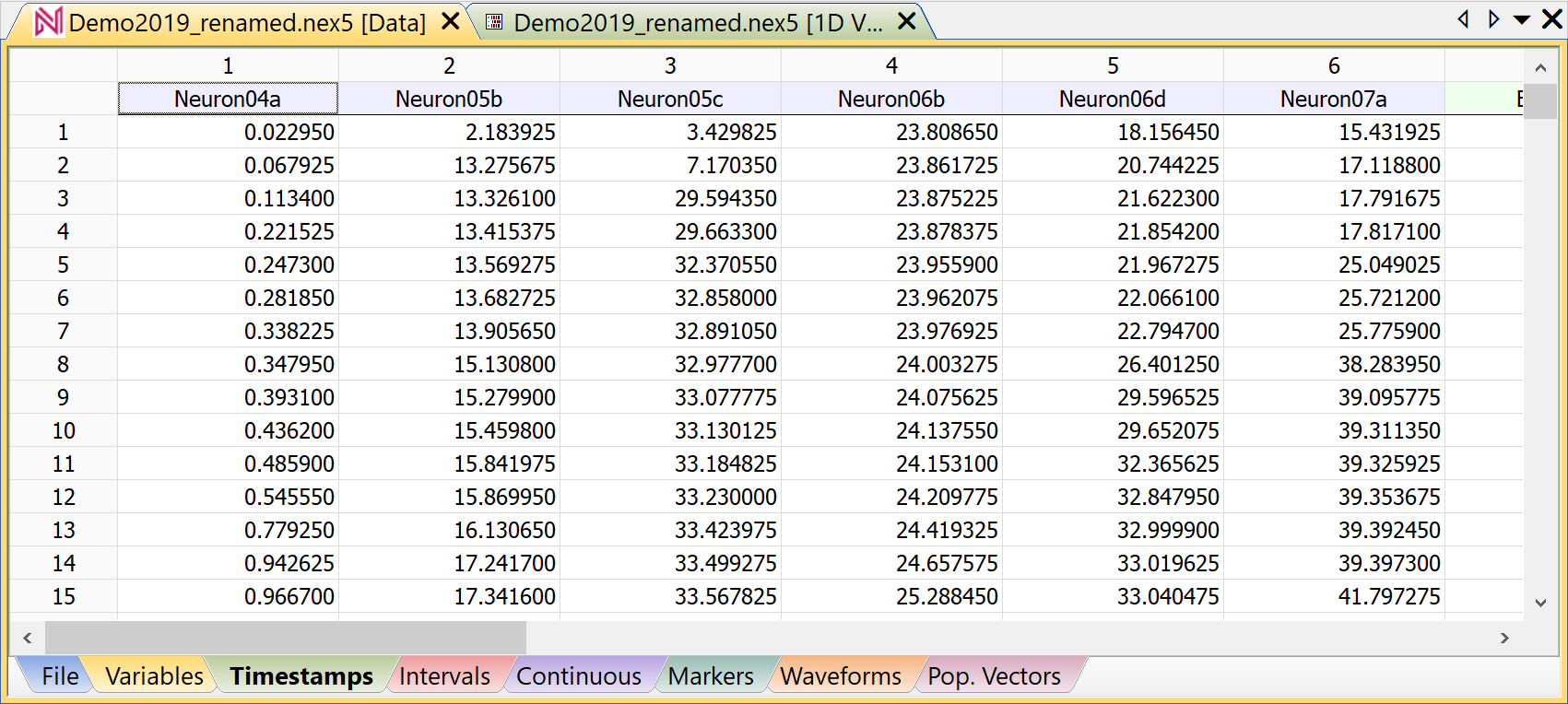Spike Trains
A spike train in NeuroExplorer represents spike timestamps (the times when the spikes occurred). The Waveform data type is used to store both the timestamps and the spike waveform values.
Note
Events are very similar to spike trains. The only difference between spike trains and events is that spike trains may contain additional information about recording sites, electrode numbers, cluster numbers, etc. (for example, spike trains contain positions of neurons used in the 3D activity “movie” shown via 3D View | 3D Activity Animation menu command).
Internally, the timestamps are stored as 64-bit signed integers. These integers are usually the timestamps recorded by the data acquisition system and they represent time in the so-called time ticks. For example, the typical time tick for Plexon system is 25 microseconds, so an event recorded at 1 sec will have the timestamp equal to 40000.
Viewers
The Preview column of the variables panel shows the timestamps in the 1 second interval that starts with the first timestamp:

The Metadata column shows electrode positions, electrode numbers, cluster numbers (unit numbers), etc.
You can view the timestamps of the selected variables in graphical display (View | 1D Data Viewer menu command):

Numerical values of the timestamps (in seconds) are shown in the Timestamps sheet of the Data view:

Timestamped Variables in Python and NexScript
Python
In Python, use Timestamps() function to get the timestamps of a neuron, event, marker or a waveform variable:
import nex
doc = nex.GetActiveDocument()
# get all the timestamps for neuron SPK01a
ts = doc["SPK01a"].Timestamps()
To assign the timestamps in Python, use SetTimestamps() function:
import nex
doc = nex.GetActiveDocument()
# create ScriptGenerated event variable
doc["ScriptGeneratedEvent"] = nex.NewEvent(doc, 0)
# set all the timestamps of the new event
doc["ScriptGeneratedEvent"].SetTimestamps([ 1.0025, 2.5, 34.5])
NexScript
You can get access to any timestamp in the current file. For example,
to print the value of the third timestamp of the variable SPK01a, you can use this script:
doc = GetActiveDocument()
Trace(doc["SPK01a"][3])
To assign the value 0.5 (sec) to the third timestamp of the variable SPK01a, you can use this script:
doc = GetActiveDocument()
doc["SPK01a"][3] = 0.5
Limitations
NeuroExplorer requires that, in each spike train, all the timestamps are in ascending order, that is
timestamp[i+1] >= timestamp[i] for all i.
NeuroExplorer also requires that
timestamp[i] >= 0 for all i.